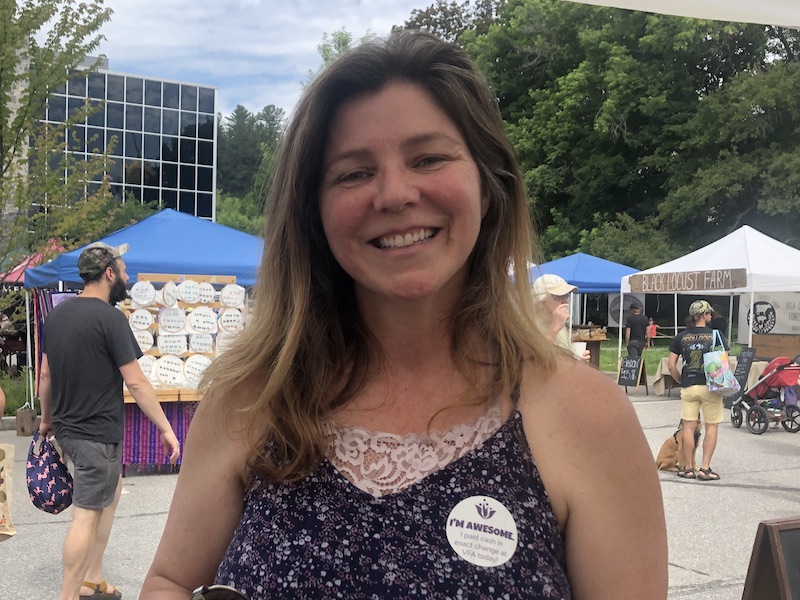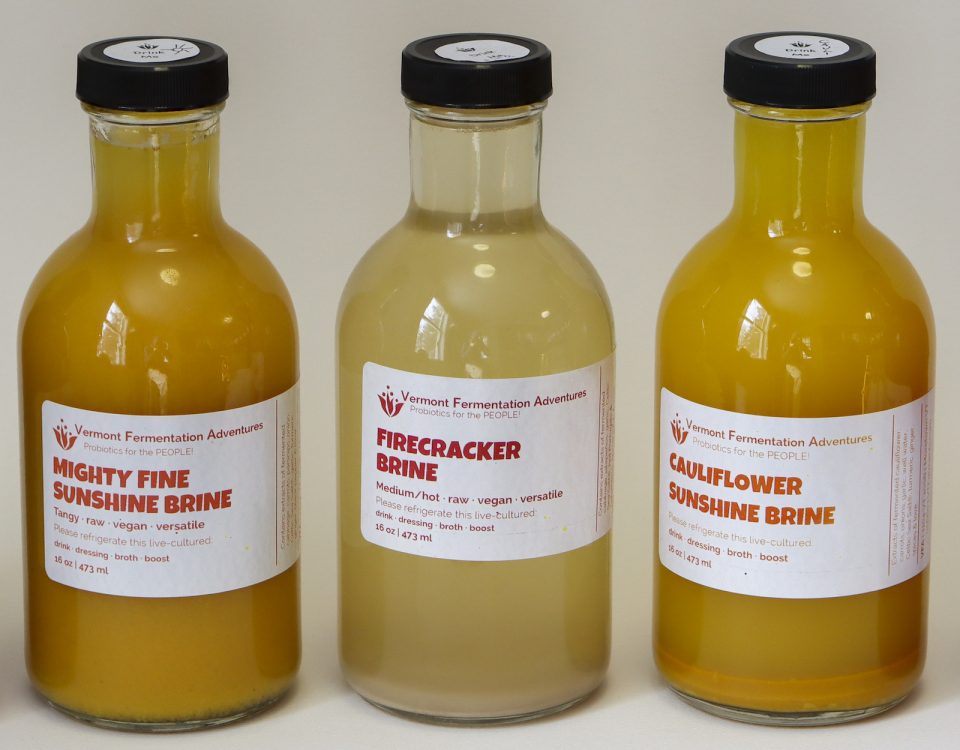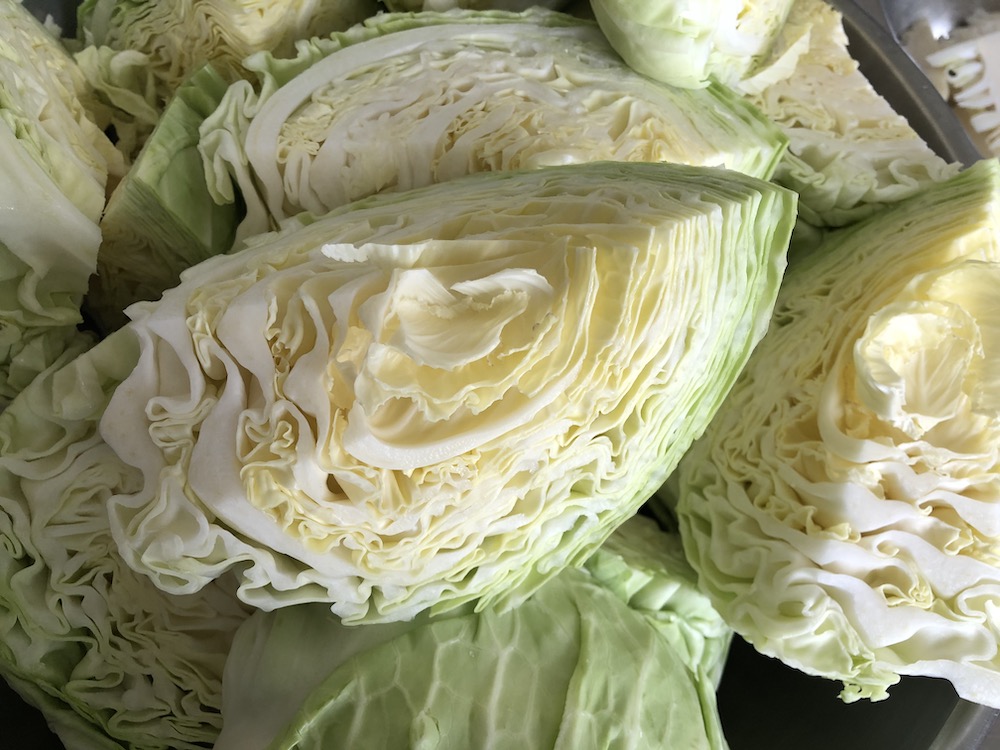
Locally grown, certified organic green cabbage pig pile, waiting to get sliced for sauerkraut
Organic. Conventional. Local. Regional. National. International?
Yes.
Wait… What? “Yes?” Yes?!? You use ingredients sourced from all of those places? You don’t only use locally grown, organic ingredients in your ferments?!?
That’s right.
What? What? This isn’t a straight farm to table fermentation operation?
That’s also right.
Well, dang… Let me hear it.
Ok. It is all true. I use ingredients from a variety of sources, but here are my priorities when I shop:
#1 Locally grown and certified organic
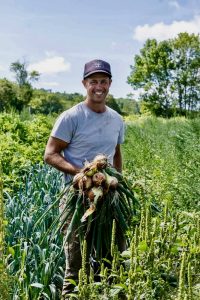
Jon Wagner of Bear Roots Farm in his happy place
This means that my highest priority is to get certified organic ingredients grown in Washington County, Vermont, moving out from there while remaining in Vermont. Because of our amazing farm partners and their increased ability to produce and store much of what I need and love, I can do this much of the time. In 2020, I was able to get Napa cabbage harvested in 2019 until March. Of 2020! Amazing! As a result, in 2020 I made one batch of kimchi with Napa I bought from a wholesaler, and two batches of sauerkraut with cabbage that was not locally grown. Pretty cool!
#2 Locally grown, not certified organic:
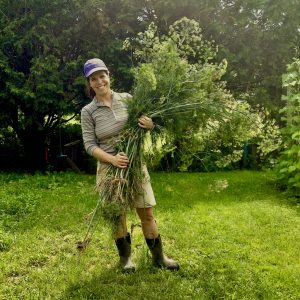
Giant homegrown dill weed and seed heads waiting, ready for Garlicky Half-Sour Pickles and Celtic Kraut
There are some farms who either because of costs, philosophies or other factors choose to not be certified organic. While I wish they would become certified, I know that they are farming cleanly. Their approaches produce delicious vegetables while nourishing the soils and our bodies. This produce is not usually the main component of a fermented creation— meaning, it is not usually the veg that dominates the mix but rather secondary ingredients or fresh herbs and garlic. I feel good about supporting these farms and farmers, and their veg is amazing. This cohort of ingredients includes anything I grow or gather myself as well. I use organic practices, just like many of these farms, but my gardens and berry bushes and perennial plants are not certified organic.
#3 Certified organic, not locally grown:
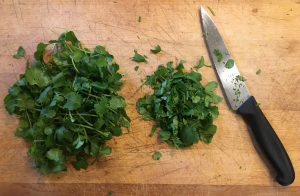
Certified organic cilantro, not grown here, but purchased at the Roots Farm Market
Certain ingredients just don’t store well in Vermont, so after a while, there is no local cilantro, no local dill, no local leeks, no local jalapeños, etc etc. In addition, certain ingredients are not produced locally or regionally. For example, I make my kombucha in the traditional method using sugar as the carbohydrate. No organic sugar to be found anywhere near here. Same goes for the tea. And most spices. You feel me. Back to veggie ferments, working with local stores (who employ local people and are patrons of multiple local businesses— you see where I am going with this) or local and regional produce distributors (see my previous parentheses), I can access these organic ingredients for awhile. Sometimes this is possible until the next harvest in Vermont. Sometimes it is not. Hence, see below.
#4 Conventional:
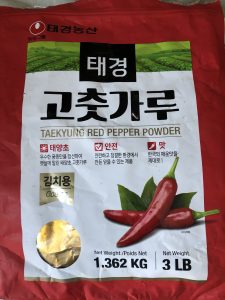
Korean red pepper powder, an essential ingredient in kimchi, international and conventional
The collective gasp rings in my ears. Yes. Conventional. Here’s the deal with me and conventional ingredients, and by this, I mean ingredients that are neither certified organic nor locally grown. Sometimes— very rarely— the certified organic, not locally grown ingredient is just not good. The best example of this would be peeled garlic. Here’s what happens: I grown and buy up as much garlic— locally grown, usually not organic as it comes from my garden and Tunbridge Hill Farm (HOLY SMOKES! Their garlic is AMAZE!)— as I can, and then peel and freeze it until I am almost insane. And then it runs out. My business at this writing is in such a state of growth that it is difficult for me to predict how much I’ll need for how long. So, I project as best I can, and try to learn for the next time around. Back to garlic— organic peeled garlic is really gross. It is translucent and slimy. I don’t know what they are doing, but nah. Nope. Not using it. Peeled conventional garlic looks like just garlic out of the peel. It is affordable. It is delicious. It ferments well, so boom. There it is.
After the locally grown garlic runs out, I’ll use peeled conventional garlic in my ferments til the next Vermont garlic harvest comes around.
While you are recovering from your momentary swoon at the thought of conventional garlic in your ferments, I’ll share with you now— in the hopes of preventing further swooning— that I will sometimes use conventional Napa cabbage in kimchi. This is not my favorite thing to do, but here is the option when I have to make this choice: no more kimchi til the Vermont harvest comes in. Right? Some folks and businesses opt for this, and I fully support that choice. At this time, my labels are all batch printed, so you can always tell where the Napa cabbage in a jar of kimchi comes from, and if you don’t want to eat kimchi made with conventional Napa, then hold off til the local and organic batch comes around. It will, but in the meantime, I’ll continue working and supplying my retail partners, supporting farm partners by being able to purchase the roots that go into kimchi, shopping locally for my family, and participating in our community as responsibly as I can.
The choice of supporting Vermont’s farming economy, preserving open lands, and reducing carbon emissions through making direct purchases with Vermont farmers is central and essential in my personal and business life.
Because of VFA’s size and position in the marketplace, I strive to balance this important choice with practicality and consideration of other local businesses, their roles in the community and the well-being of their human resources. I hope that VFA gets it right on all of these levels and invite you to contact me with any questions or ideas… especially if you know a Vermont farmer that has organic Napa and beautiful garlic year round.


